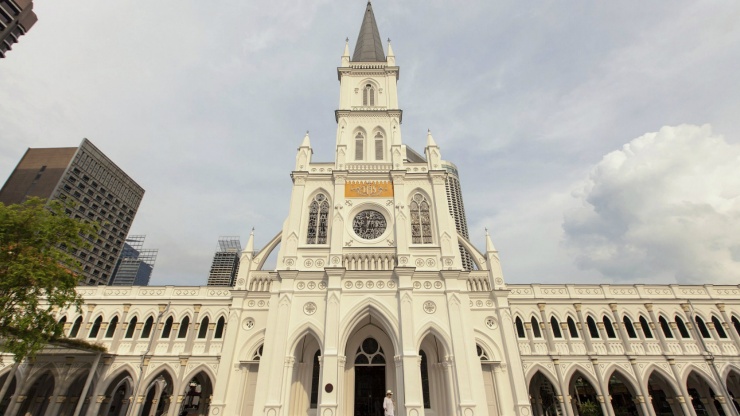*Editor's note, July 12, 2017: We updated inaccuracies in this article after receiving feedback from a reader.
CHIJMES is a venue that sits prettily today in the City Hall area, surrounded by sleek skyscrapers and traffic-flooded roads.
The former convent, which still houses a Gothic-style chapel, is nearly impossible to miss for its old-world charm. Within its premises are open green lawns, marbled archways, and neoclassical courtyards, all reminiscent of a different era —- one that is very different from our modern city lives.
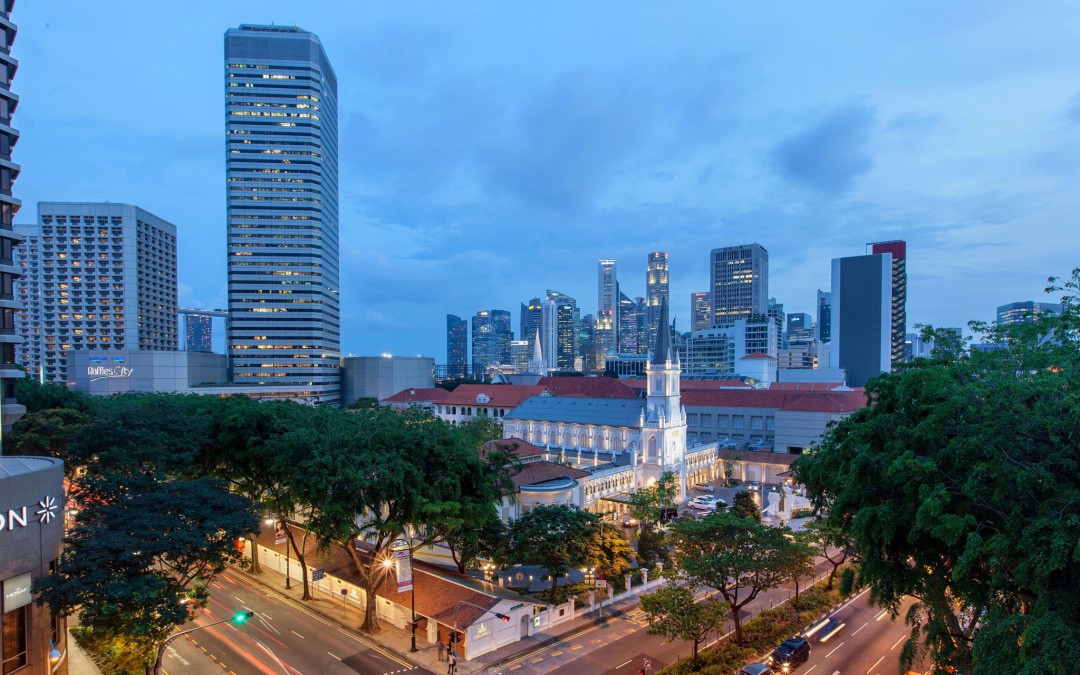 Photo via.
Photo via.
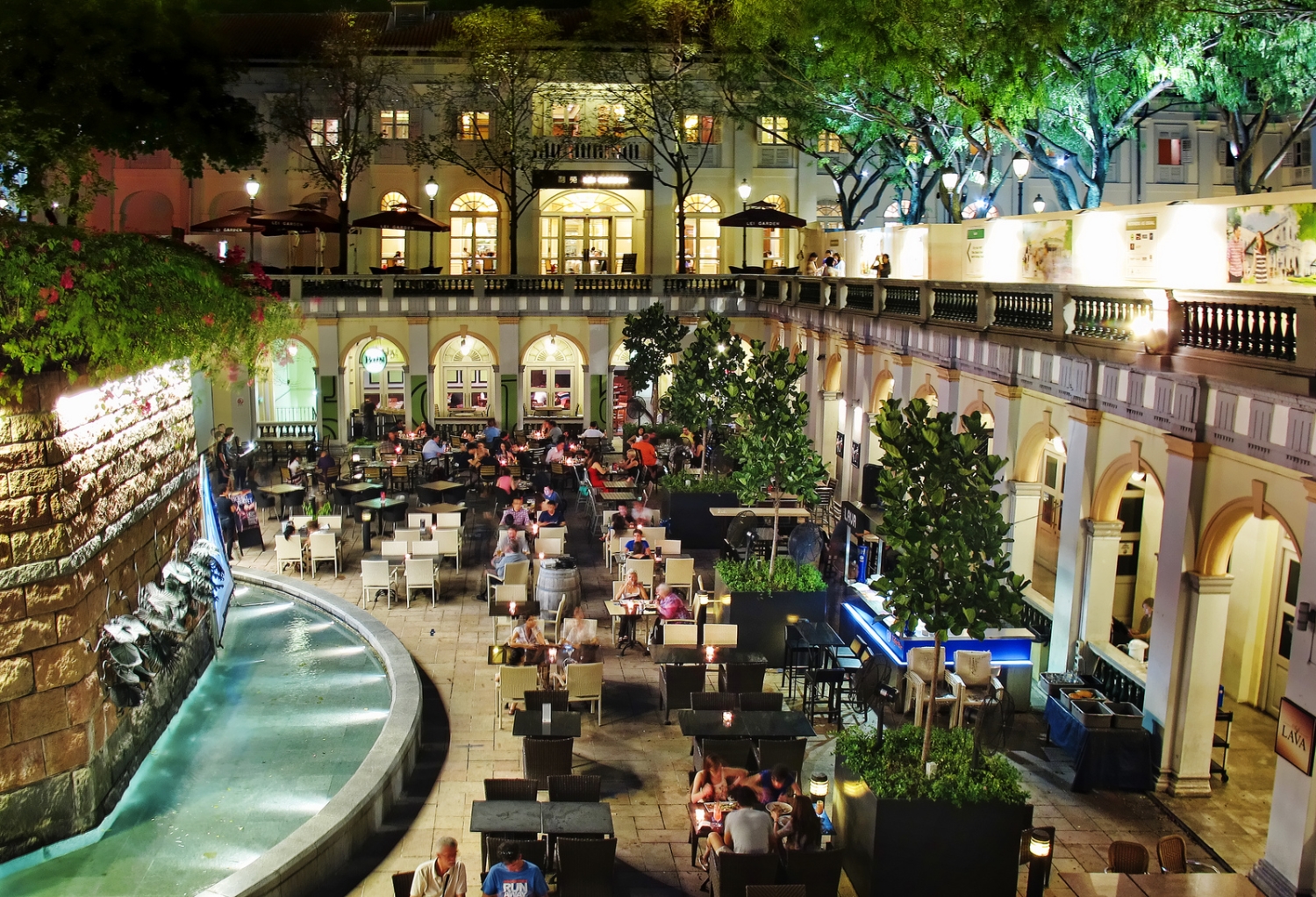 The basement courtyard of CHIJMES pre-revamp. Photo via.
The basement courtyard of CHIJMES pre-revamp. Photo via.
Declared a national monument on October 26, 1990, CHIJMES is today home to restaurants and entertainment hotspots. The picturesque backdrop is also perfect for performances, recitals, and weddings.
But it served a very different purpose in the past.
The complex got its rich history, and its name, from the Convent of the Holy Infant Jesus (CHIJ). Their presence has been felt in Singapore since the 19th century, and still has influence today via the CHIJ schools.
Caldwell House, the original building which has now been converted into a dining and events venue, was originally constructed in 1840 at the instruction of magistrate clerk H.C. Caldwell. It resided on the corner of Bras Basah Road and Victoria Street.
[caption id="" align="alignnone" width="740"] Caldwell House. Source: Visit Singapore[/caption]
Caldwell House. Source: Visit Singapore[/caption]
Father Jean-Marie Beurel, a French Roman-Catholic priest, then bought the property in 1853. His intention was to open a Catholic school for girls, run by the Infant Jesus Sisters. The property was purchased for 4,000 francs.
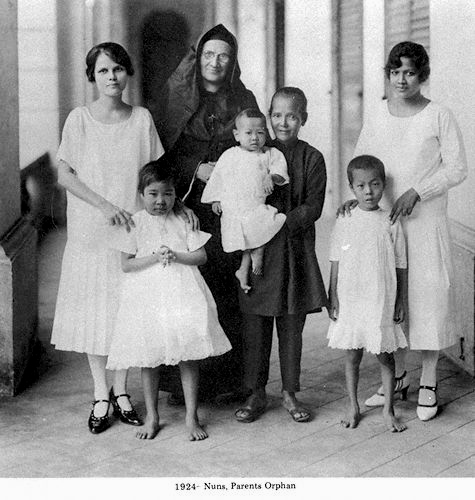 Photo via.
Photo via.
Four nuns, led by Reverend Mother Mathilde Raclot, came to Singapore in February of the following year. They had already set up the first Infant Jesus school in Asia in Penang, and wasted no time once arriving in Singapore.
[related_story]
Within 10 days of their arrival, the Sisters commenced classes with a humble cohort of 39 students. A year later, they had also established a boarding house and an orphanage.
CHIJ was affectionately called "Town Convent" by the rest of the community.
In 1903, the grand chapel was erected and consecrated the following year. It was one of the most elaborate places of worship in Singapore, with its stained glass artwork and wall frescoes being admired by many.
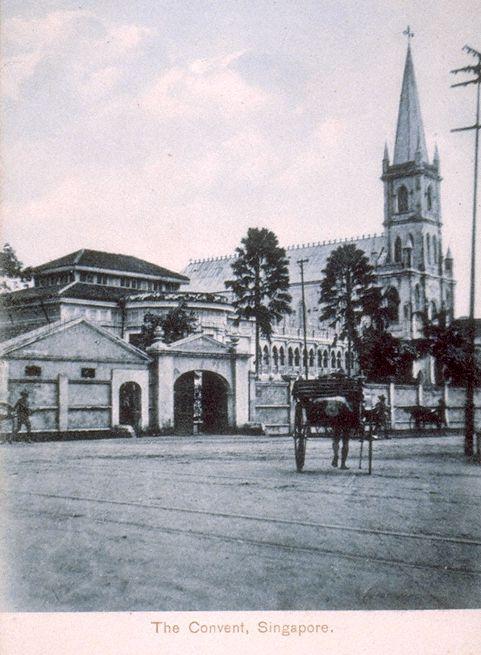 Photo via NAS.
Photo via NAS.
The nuns who resided in the convent worked incredibly hard to keep the school running — they did chores, graded papers, facilitated mass, maintained the grounds, took care of needy women and children, and raised money to support their activities.
The orphanage, called the Home for Abandoned Babies, was well-known for taking in abandoned children, many of whom did not have proper identification documents. Parents would leave babies and young children outside the Convent's gates on Victoria Road, where they would remain until the Sisters came to fetch them in the morning.
This gate was called the Gate of Hope, due to all second chances it offered to children who were unwanted by their parents.
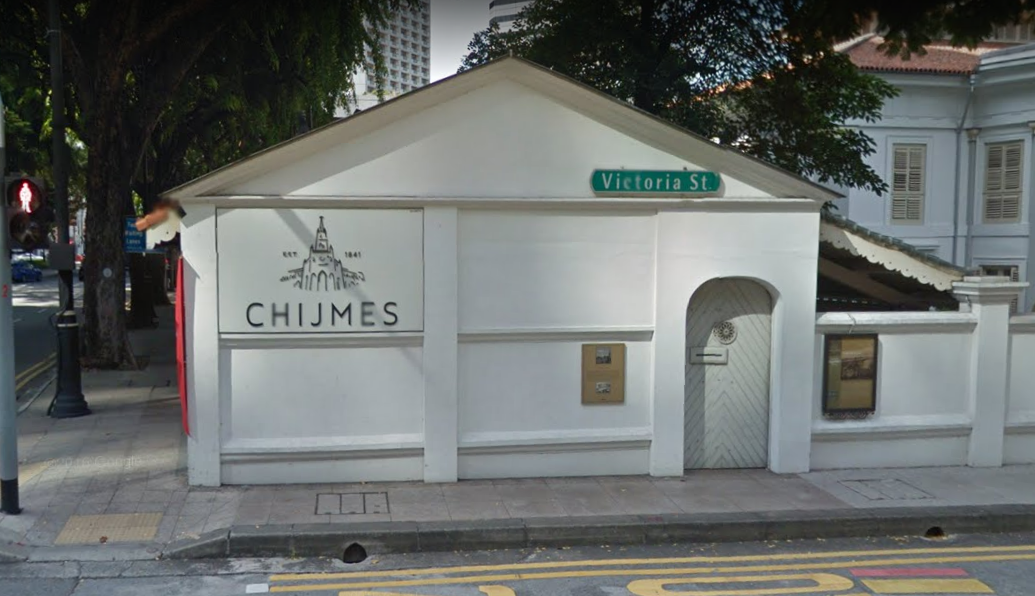 Gate of Hope at Chijmes. Source: Google Street View
Gate of Hope at Chijmes. Source: Google Street View
The sisters would give these children names, and would raise them in the orphanage with the assistance of the older girls. When the orphans reached schooling age, they were all given a free CHIJ primary school education.
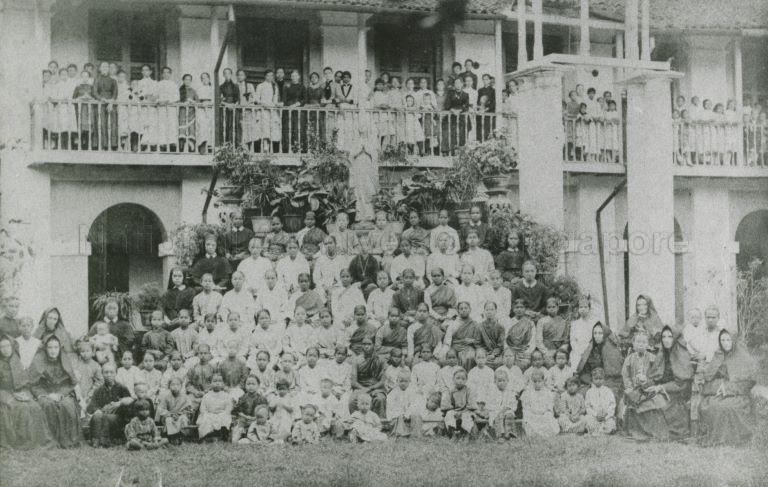 Photo via NAS.
Photo via NAS.
Over the years, other nuns from the Infant Jesus Sisters also founded several other CHIJ schools across Singapore.
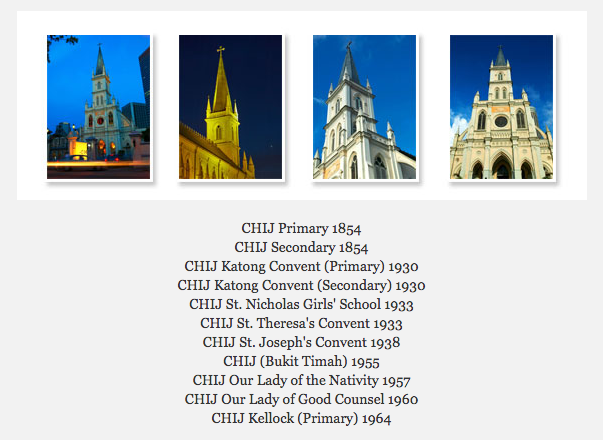 Screenshot from CHIJ Sec Sch website.
Screenshot from CHIJ Sec Sch website.
On February 15, 1942, much of the chapel and school were damaged when seven bombs fell across the city, marking the beginning of the Japanese Occupation in Singapore from 1942 to 1945.
During the occupation, the school was temporarily renamed Victoria Girls School. Students were taught Japanese songs and shown Japanese films as part of the curriculum.
The CHIJ school remained at its original location at CHIJMES until 1983, when they relocated to Toa Payoh so that redevelopment could take place at the site. The school's final mass took place on November 3, 1983.
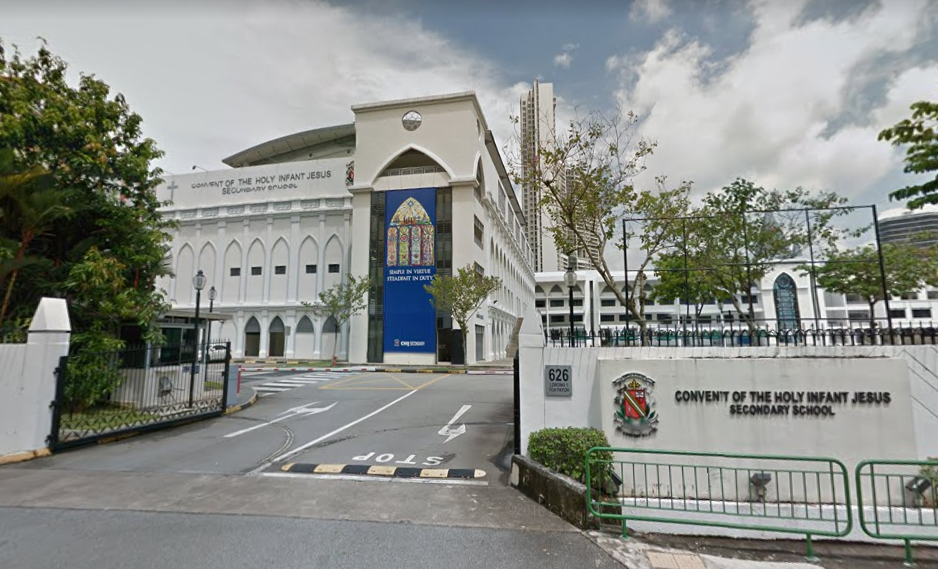 CHIJ Secondary School in Toa Payoh. Source: Google Street View
CHIJ Secondary School in Toa Payoh. Source: Google Street View
The school continues to thrive in Toa Payoh.
Though the chapel and Caldwell House were preserved, the convent's primary and secondary school buildings were eventually demolished to build SMRT's corporate headquarters.
The remaining parts of the complex were restored before being re-christened CHIJMES, a subtle nod to the area's history and the chapel's ringing bells.
Top photo from Visit Singapore.
1819 is a labour of love by Mothership.sg where we tell stories from Singapore’s history, heritage & culture. Follow us on Facebook, Instagram and Twitter!
If you like what you read, follow us on Facebook, Instagram, Twitter and Telegram to get the latest updates.
